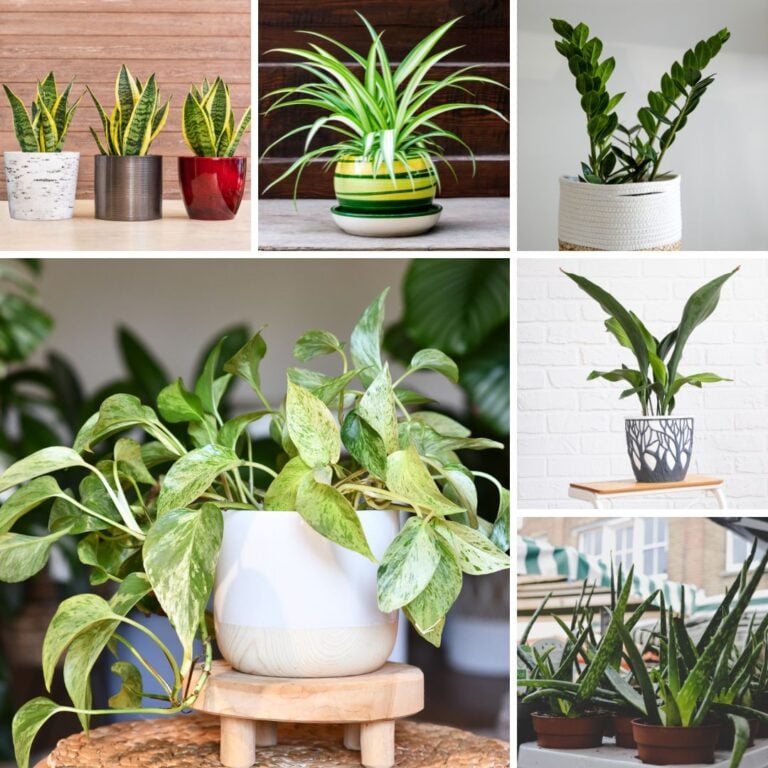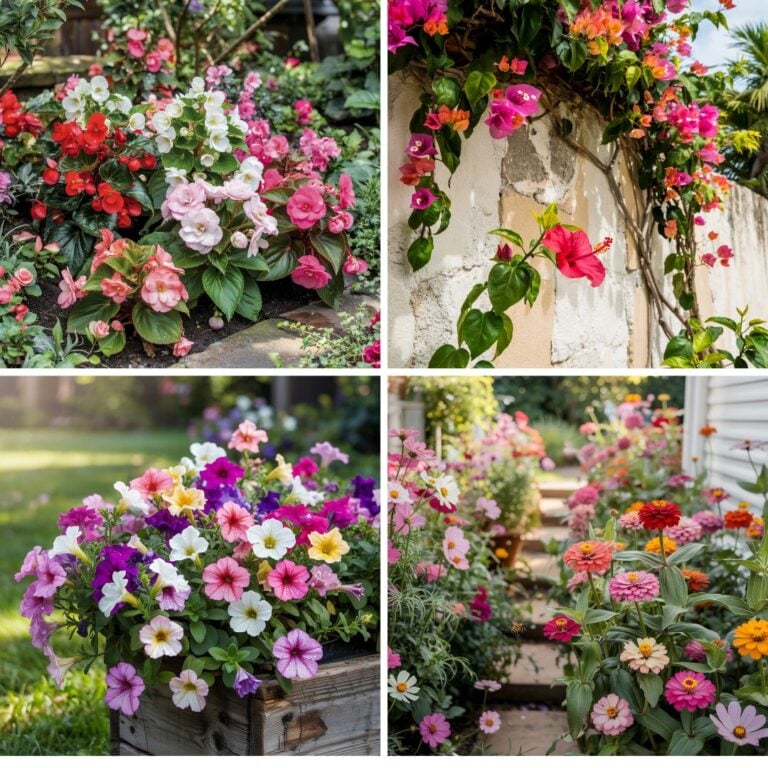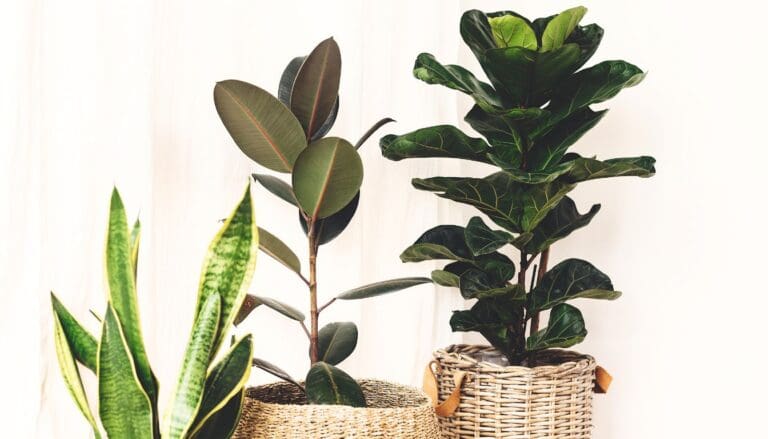8 Best Cactus Varieties to Keep Indoors This Winter
I really enjoy keeping plants indoors when the weather gets cold.
Cacti are honestly some of the easiest to care for, and they bring a quirky vibe to any room.
They don’t hog space, and their weird shapes just make things feel a bit more lively.
I’ve noticed that the right cactus can totally brighten up a dreary winter, and they barely need any fussing over.
Here are some of my favorite cactus varieties to grow inside when it’s chilly out.
I’ll throw in some basic care tips and little fixes for common winter problems, just to help your plants stay happy.
Please note: Simplify Plants is reader-supported. As an Amazon Associate, I earn from qualifying purchases made by our readers with no extra cost added to you all! Some links in the post are affiliate links and I get a commission from purchases made through links in the post.
1) Christmas Cactus
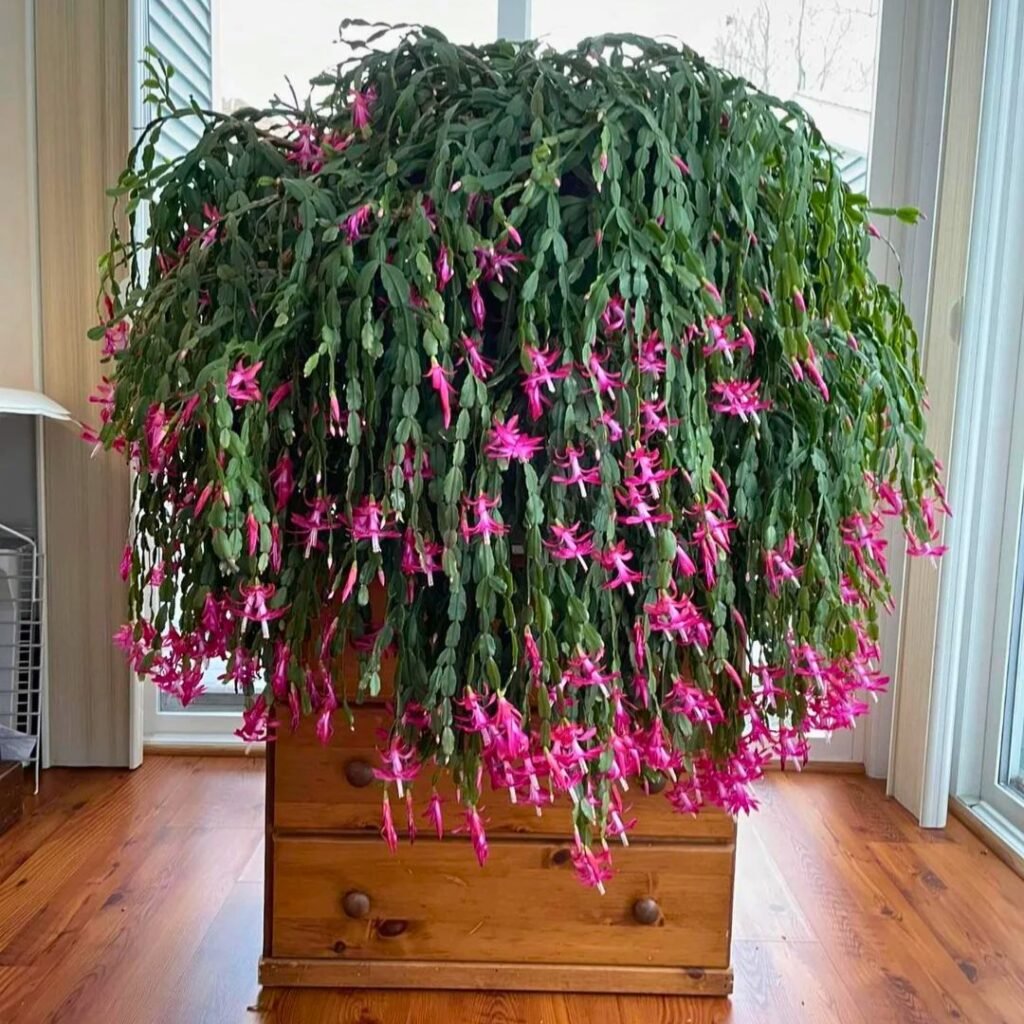
I always keep a Christmas Cactus indoors. The color it brings in winter is hard to beat. Instead of the usual spines, it’s got these flat, green segments, and when it blooms, it just feels festive.
This plant is happiest in indirect light. I set mine near a window where it gets gentle sunlight, but I keep it out of harsh rays. Too much sun can mess up the leaves—yellowing or even burning them.
I water it a bit more often than my other cacti. The trick is to keep the soil a little moist, but never soggy. I always wait for the top layer to dry out before watering again, just to be safe.
It does well in cooler indoor temperatures, so I keep it away from heaters or vents. Dry air isn’t its friend. A touch of humidity seems to help a lot.
When buds start popping up at the segment tips, I get excited. To get those blooms, I make sure it gets long nights and cooler evenings in the fall. That seems to kick it into flowering mode.
One thing I love is how long-lived it is. If you treat it right, it can stick around for years—sometimes even passed down in families. That’s pretty special.
The Christmas Cactus is easy to share, too. Just snip off a piece, let it dry for a day, and pop it in some soil. It’ll root before you know it.
2) Echinopsis
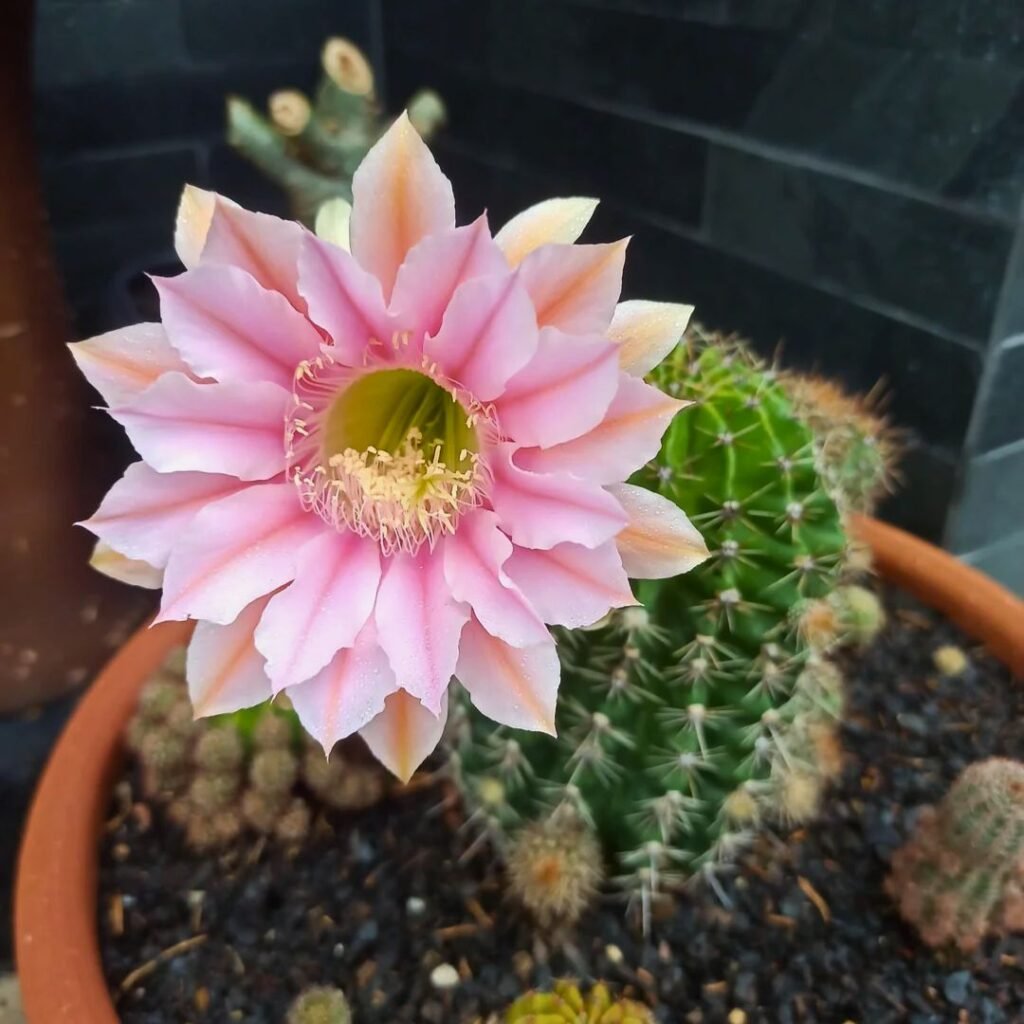
I keep Echinopsis around because it’s so manageable—round, compact, and not fussy at all. It’s perfect for a windowsill or a little corner on my desk.
What really gets me are the big, showy blooms. The flowers show up in spring or summer, even if the plant lives indoors. They don’t stick around for long, but wow, they’re worth the wait.
I only water when the soil is dry. Overwatering is a real risk, so I stay cautious. Drainage holes in the pot are a must.
It likes bright, indirect light. I give it a sunny window, but I don’t let it bake in the midday sun.
Echinopsis doesn’t hog space, so I’ve got a couple lined up together. Each one seems to have its own little quirks. Watching them change is kind of fun.
For me, the easy care and wild flowers make Echinopsis a winner in winter.
3) Moon Cactus
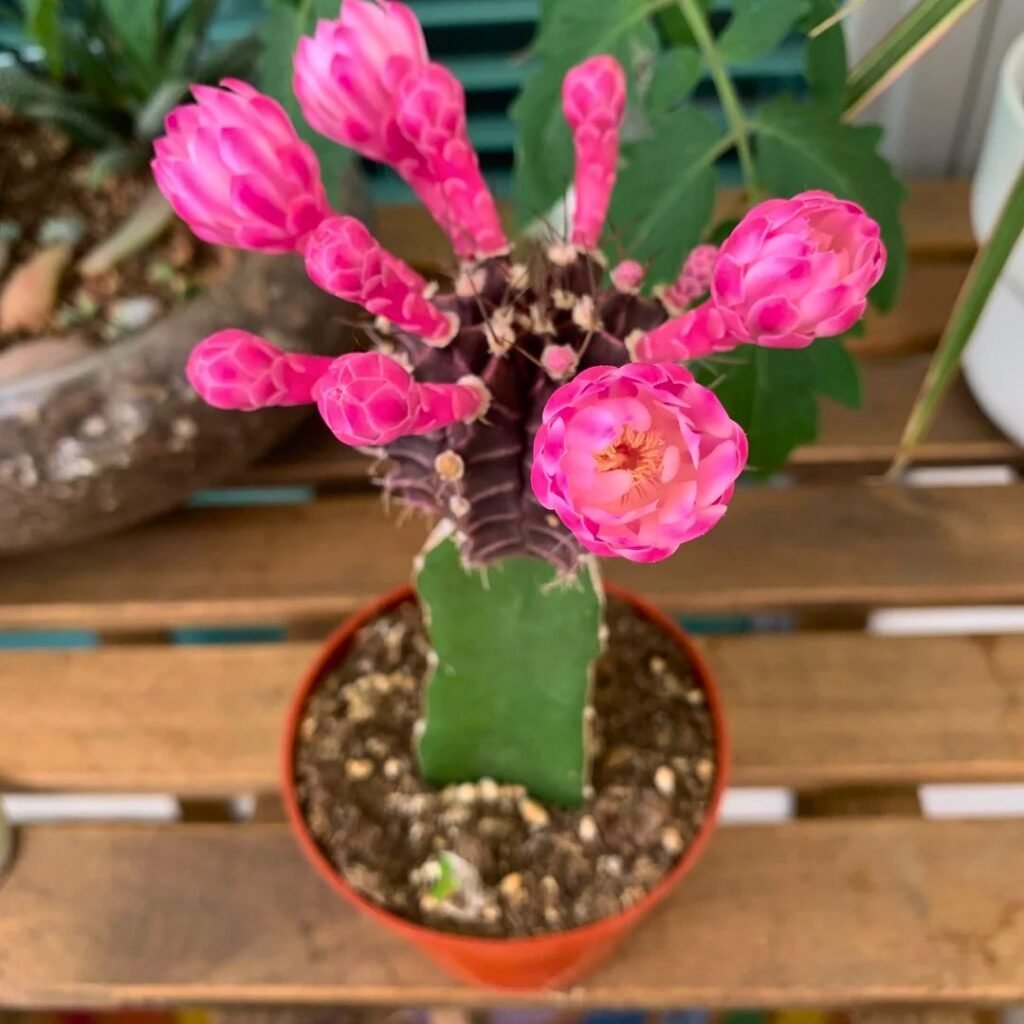
A Moon Cactus on my windowsill is like instant color therapy. The top is usually bright red, yellow, or orange, and it sits on a green base. It’s hard to miss.
It’s tiny, so I can put it just about anywhere—desk, shelf, narrow ledge, you name it. No worries about it getting too big or taking over.
I water my Moon Cactus only when the soil is dry. Too much water is a no-go, so drainage is key. I’ve learned that a little attention keeps it happy.
It loves bright but indirect light. I keep it near a window that gets lots of sun, but I avoid letting it roast in direct rays. The colors fade if it gets too much.
Honestly, it’s almost effortless to care for. Even in winter, it keeps things cheerful with barely any work.
4) Haworthia
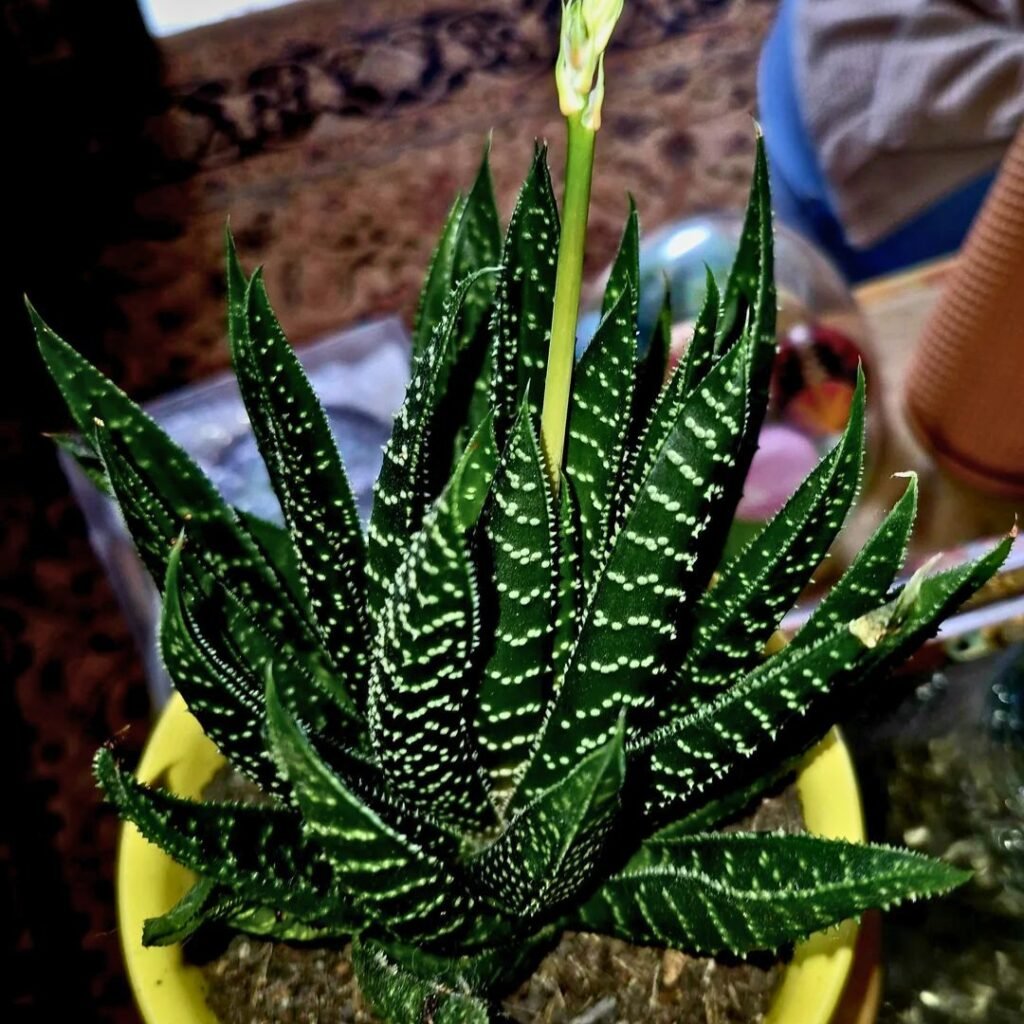
Haworthia is a favorite of mine because it’s tiny and super low-key. Its thick, pointed leaves look a bit like aloe, but with neat white stripes or dots.
It doesn’t need much light, so I can tuck it on my desk or a shelf and not worry. Bright, indirect light is best, but it’s more forgiving than most cacti if the room’s a bit dim.
I water only when the soil is bone dry. Overwatering is the enemy here, so drainage is a must.
It grows slowly, which I appreciate. No rushing to repot or trim it back.
Because it stays small, I like grouping it with other little plants. Adds some texture without crowding things.
If you want something low-maintenance but still interesting, Haworthia is a solid pick. It’s honestly one of the easiest cacti I’ve had.
5) Bunny Ear Cactus
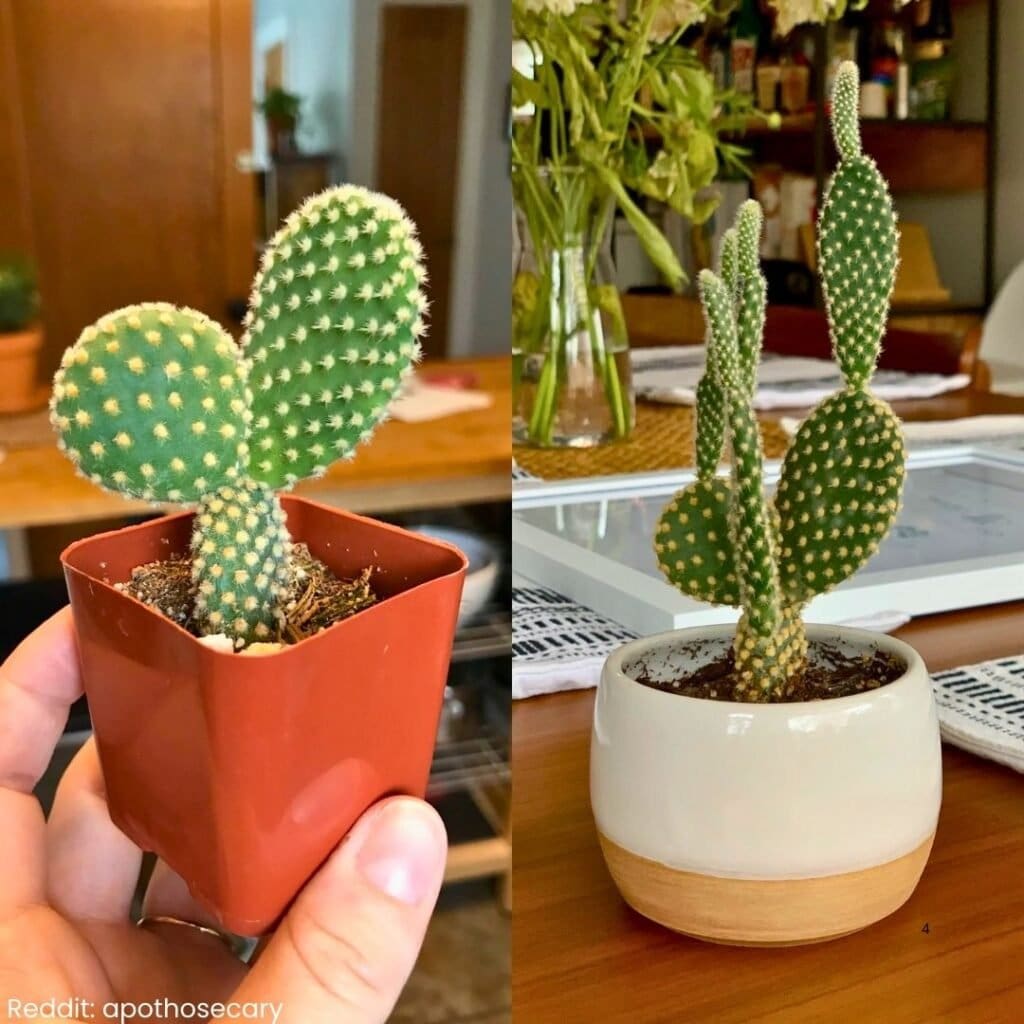
The Bunny Ear Cactus is just fun to look at. It’s got these flat pads that grow in pairs—kind of like little bunny ears.
It stays on the small side, so it fits well on a sunny windowsill or a small desk. Bright spots are its happy place, and it doesn’t take up too much room.
The pads are covered in tiny glochids—basically small bristles instead of big spines. They look soft, but I always use care when handling because those bristles stick.
I water only when the soil is dry. Too much water is a recipe for trouble, so I keep it light.
It likes bright, indirect light. I park it near a window with lots of daylight, but not where it’ll get scorched.
In winter, I slow down on watering and just let it rest. Makes it even easier.
Honestly, it adds a playful vibe to my space. The look and easy care keep it high on my list.
6) Golden Barrel Cactus
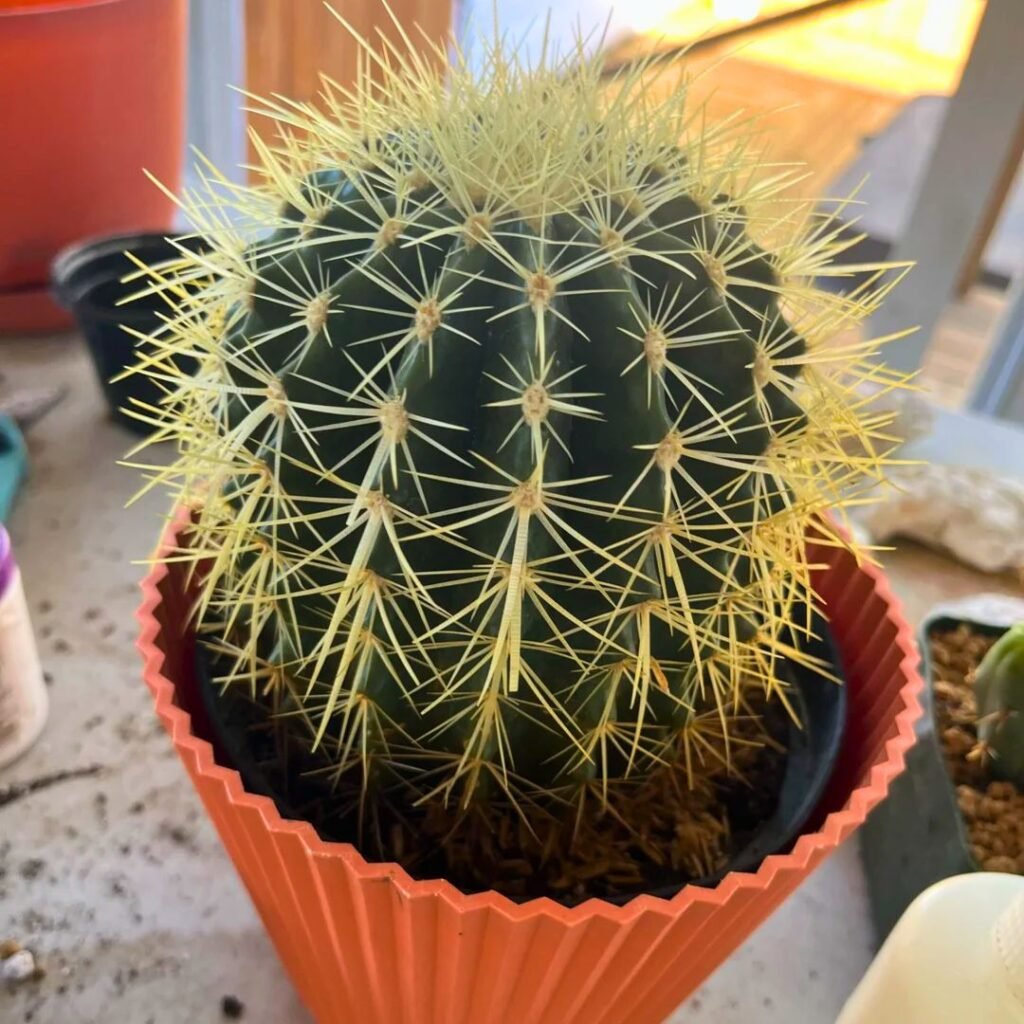
The Golden Barrel Cactus is like a little ball of sunshine with its rounded shape and yellow spines. It brightens up my windowsill, even on cloudy days.
It grows pretty slowly, which is great for indoor life. I don’t worry about it outgrowing its spot anytime soon.
I keep it in a bright, sunny spot—south-facing windows are perfect. It needs lots of light to stay happy.
Watering is easy. I wait until the soil is completely dry, then give it just a bit. Too much water is a no-no.
It doesn’t demand much, which is perfect when I’m busy. Just check the basics and it keeps looking good.
The bold shape and gold spines add something special to any room. It’s kind of like a natural sculpture.
7) Old Lady Cactus
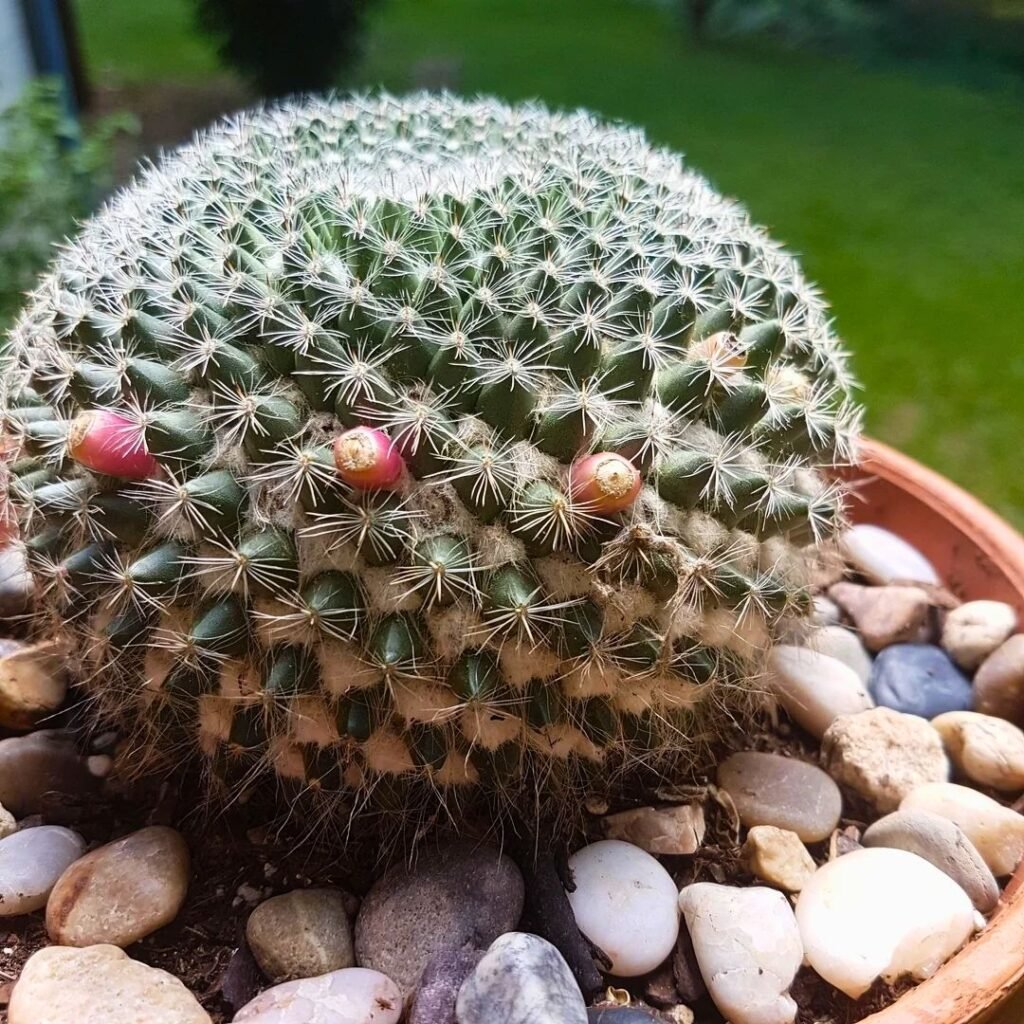
I have a soft spot for the Old Lady Cactus. It’s round and covered in fine white spines, giving it a soft, fuzzy look—though, trust me, it’s still prickly.
It stays small, so it’s easy to keep on a windowsill. It grows slowly, so there’s no rush to repot.
It likes bright, indirect light. A sunny window works, but I don’t let it sit in harsh sun for too long.
In winter, I water it sparingly. The soil has to be totally dry before I water again. That keeps root rot at bay.
Sometimes, it surprises me with small pink or purple flowers on top. The blooms look great against the white fuzz.
It’s a tough little plant. As long as I don’t overdo the water, it handles winter just fine.
For me, the Old Lady Cactus brings a bit of charm indoors when everything outside feels gray.
8) Mammillaria
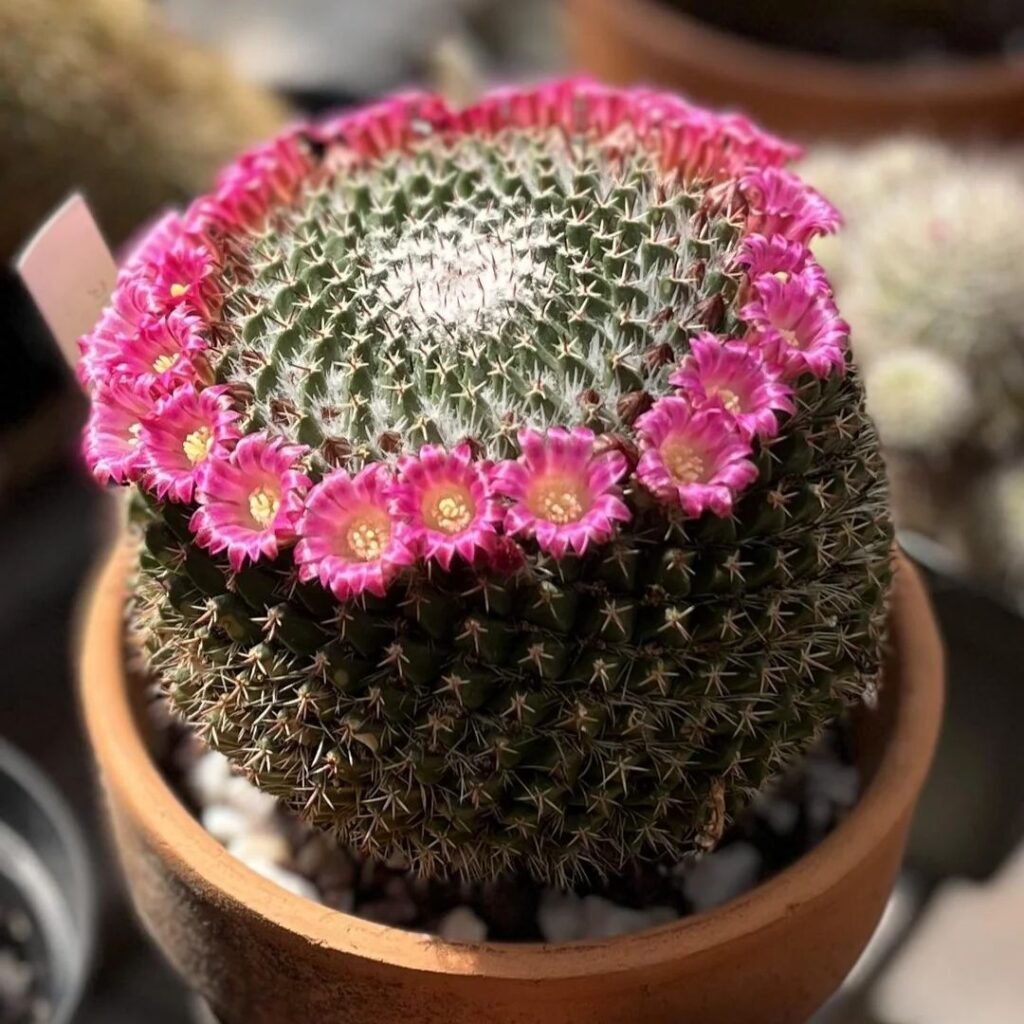
I like Mammillaria because it’s honestly one of the easiest cacti to grow inside. It stays small, so I can fit it just about anywhere—windowsill, desk, whatever.
It’s got a round shape with soft-looking spines. Some types grow in clusters, which makes them look like a bunch of little green balls.
I’ve seen it bloom with small pink or white flowers in a ring around the top. The blooms aren’t huge, but they add a nice pop of color in winter.
Mammillaria loves bright, indirect light. I keep mine near a sunny window, but not in harsh sun.
Watering is straightforward. Let the soil dry out completely, then water. That’s helped me avoid root rot.
It doesn’t need much fertilizer, either. A light feed now and then during growing season is enough.
Because it’s compact and easygoing, I think Mammillaria is perfect for beginners. It looks good solo or mixed in with other little cacti.
With its size, easy care, and the occasional flowers, Mammillaria makes winter plant care feel pretty rewarding.
Essential Indoor Cactus Care Tips
I keep my indoor cacti healthy by giving them decent light, careful watering, and the right soil. Those basics really help them stay colorful and strong through winter.
Lighting Requirements for Winter
I set my cacti near the brightest south-facing window I have. They need at least 4–6 hours of direct sunlight each day, otherwise they’ll get leggy or lose their shape. If sunlight’s scarce, I’ll use a full-spectrum grow light to help out.
Since the sun sits lower in winter, I check to make sure nothing’s blocking the light. I also rotate my pots every couple weeks so all sides get some sun.
If a window’s too drafty or cold, I just move the plant a bit further in, but still close enough to catch the light. It’s a bit of a balancing act, but it keeps my cacti happy and safe from cold air.
Watering and Humidity Guidelines
I water my cacti pretty sparingly during winter since they barely grow when it’s cold. Usually, I’ll wait until the soil is bone dry before even thinking about watering again.
Honestly, that means I might only water them once every 3–4 weeks. I always pour water right into the soil—never let it sit in the saucer.
Standing water is just asking for root rot, and that’s probably the biggest headache with indoor cacti.
My place gets super dry in winter, but cacti actually love that. They’re fine with low humidity, so I never bother misting them.
Mostly, I just focus on keeping the room warm and making sure the soil doesn’t stay soggy.
Choosing the Right Pots and Soil
I stick with pots that have drainage holes so extra water can escape. If there aren’t any holes, the roots just stay wet way too long and that’s never good.
Clay or terracotta pots are my go-to because they help moisture evaporate faster than plastic ones. For soil, I always look for a cactus-specific mix since it drains quickly.
If I’m out of that, I’ll mix in some coarse sand or perlite with regular potting soil to help with drainage. I also keep my cacti in pots that are just a bit bigger than the plant itself.
Oversized containers hold too much moisture, which can cause all sorts of fungal issues. A snug fit keeps the roots happy and healthy.
Common Indoor Cactus Problems in Winter
Every winter, I notice my cacti run into trouble mostly because of too much water or annoying pests. Both can really mess things up if I don’t catch them early.
Preventing Overwatering and Root Rot
I’ve found that overwatering is pretty much the fastest way to lose a cactus in winter. They just don’t use much water when it’s cold, so soggy soil is a no-go.
To avoid this, I always let the soil dry out completely before watering again. I’ll stick my finger an inch deep—if it feels dry, I’ll give it a little water.
Making sure my pots have drainage holes is a must. Otherwise, water just pools at the bottom and causes root rot.
I use a gritty, well-draining soil mix with sand or perlite to keep things airy for the roots. Another thing: I water less often and just pay attention to the plant and soil instead of following a strict schedule.
Dealing With Pests and Diseases
Sometimes, I spot spider mites, mealybugs, or scale insects on my cacti during winter. They love the dry, warm air inside.
These pests drain the plant’s juices and can weaken it pretty fast. When I see them, I grab a cotton swab dipped in rubbing alcohol and wipe them off.
That usually does the trick without hurting the plant. For bigger problems, I’ll use an insecticidal soap spray.
I watch out for fungal spots or mold too. Poor air flow and damp soil seem to invite those.
To prevent that, I put my cacti somewhere bright with good airflow and try not to crowd them together. Regular checks help me catch problems before they get worse.
If I clean and inspect my plants every week, they tend to stay healthy through winter.
Frequently Asked Questions
I try to keep my cacti healthy by picking the right types, watching how much water they need, and making sure they get enough light and a decent temperature.
I also pay attention to soil, pots, and any signs that something’s off.
What are some low-maintenance cacti suitable for indoor growing?
I’d say Christmas Cactus, Bunny Ear Cactus, and Haworthia are all super easy indoors. They don’t need much fussing and fit nicely in smaller spaces.
How often should I water my indoor cacti during the winter months?
For me, it’s about once every 3–4 weeks in winter. I always let the soil dry out before adding more water.
Can cacti thrive indoors with limited natural light?
Yeah, they can. I keep mine near a south-facing window or use a grow light if sunlight is lacking.
That way, they don’t stretch out or lose their color.
What’s the ideal temperature range for keeping cacti indoors in winter?
I aim for rooms that stay between 60–75°F. I try to keep them away from cold drafts and heating vents.
How can I tell if my indoor cactus is healthy?
I look for firm stems, bright color, and steady growth. If I see soft spots, shriveling, or weird discoloration, I know it’s time to check on things.
What are the best pots and soil types for indoor cacti?
Honestly, I always go for pots with drainage holes. You really don’t want water hanging around the roots.
For soil, I like well-draining cactus soil—something with a bit of sand or perlite mixed in. It just seems to keep root rot at bay.
Recommended Garden Supplies
| Product Image | Our Recommended Gardening Supplies | Check Offers! |
|---|---|---|
Top Top
Top
Top
Top
Top
Top
Top
Top | rePotme Houseplant and Tropical Classic Potting Soil Mix | Check Offer On Amazon |
 Top
Top
Top
Top
Top
Top
Top
Top | Espoma Organic Indoor Plant Food | Check Offer On Amazon |
 Top
Top
Top
Top
Top
Top
Top
Top | GooingTop LED Grow Light 6000K Full Spectrum Clip Plant Growing Lamp | Check Offer On Amazon |
 Top
Top
Top
Top
Top
Top
Top
Top | Soil Moisture Meter | Check Offer On Amazon |
 Top
Top
Top
Top
Top
Top
Top
Top | Govee Hygrometer Thermometer, Bluetooth Enabled! | Check Offer On Amazon |
 Top
Top | LEVOIT Humidifiers for Large Room(Best For Plants) | Check Offer On Amazon |
 Top
Top
Top
Top
Top
Top
Top
Top | Upgraded DIY Automatic Drip Irrigation Kit, 15 Potted Houseplants Support | Check Offer On Amazon |
 Top
Top
Top
Top
Top
Top
Top
Top | Stainless Steel Heavy Duty Gardening Tool Set | Check Offer On Amazon |
 Top
Top
Top
Top
Top
Top
Top
Top | Bonide Insecticidal Soap | Check Offer On Amazon |
 Top
Top
Top
Top
Top
Top
Top
Top | Bonide 32 oz Spray Neem Oil for Organic Gardening | Check Offer On Amazon |
 Top
Top
Top
Top
Top
Top
Top
Top | Garden Safe Fungicide | Check Offer On Amazon |

